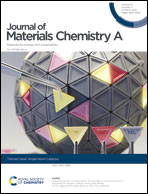Polyoxometalate-based materials: quasi-homogeneous single-atom catalysts with atomic-precision structures
Abstract
Polyoxometalates (POMs) are early-transition-metal oxide clusters with diverse structures and extensive functionality. Due to their excellent redox properties and stability, POM clusters can serve as ligands and supports for constructing single-atom catalysts (SACs) with atomic-precision structures, where the coordination states and loading of active sites can be controlled precisely. Metal-substituted POM clusters are also promising candidates to act as sub-nanometer building blocks, where neoteric morphologies and enhanced catalytic properties have been obtained using these cluster-based assemblies. Moreover, POM-based single-atom catalysts display the advantages of both heterogeneous and homogeneous catalysts, in addition to excellent solubility and reusability. This perspective summarizes recent progress relating to polyoxometalate-based single-atom catalysts, including the synthesis and applications of metal-substituted POM clusters and the use of cluster-based assemblies as single-atom catalysts. Future research directions and challenges are also expounded upon, and this work may allow a comprehensive understanding of and novel insights into cluster-based single-atom catalysts.

- This article is part of the themed collection: Single-Atom Catalysis


 Please wait while we load your content...
Please wait while we load your content...